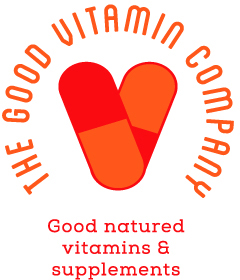Finding Relief: The Back Story of Low Back Pain
Low back pain is a prevalent health issue affecting millions of people worldwide. It can be debilitating, impacting daily activities and overall quality of life. One of the common conditions associated with low back pain is sciatica. Sciatica refers to the pain that radiates along the path of the sciatic nerve, which branches from your lower back through your hips and buttocks and down each leg. This blog aims to explore the link between low back pain and sciatica and provide effective strategies, including yoga, diet, and supplements, to manage these conditions.
Understanding Sciatica:
Sciatica is not a standalone condition but rather a symptom of an underlying problem, such as a herniated disc, spinal stenosis, or degenerative disc disease. When the sciatic nerve is compressed or irritated, it can lead to pain, numbness, tingling, or weakness in the lower back, buttocks, and legs. The pain may vary from mild to severe and can be exacerbated by certain activities like sitting or standing for prolonged periods, lifting heavy objects, or bending forward.
The Link with Low Back Pain:
Low back pain often precedes or accompanies sciatica. Many cases of sciatica stem from issues in the lumbar spine, such as a herniated disc or spinal misalignment, which also contribute to low back pain. Therefore, addressing the underlying causes of low back pain is crucial in managing sciatica and preventing its recurrence.
Yoga for Low Back Pain and Sciatica:
Yoga is an effective therapeutic approach for alleviating low back pain and sciatica. Specific yoga poses help stretch and strengthen the muscles surrounding the spine, improve flexibility, and promote proper alignment. Poses such as Cat-Cow stretch, Downward-Facing Dog, and Pigeon pose can help relieve tension in the lower back and hips, reducing the pressure on the sciatic nerve. Additionally, practicing mindfulness and deep breathing techniques during yoga can enhance relaxation and reduce stress, which can exacerbate pain symptoms.
Dietary Considerations:
Maintaining a healthy diet plays a crucial role in managing low back pain and sciatica. Consuming anti-inflammatory foods rich in omega-3 fatty acids, antioxidants, and vitamins can help reduce inflammation and alleviate pain. Incorporating foods such as fatty fish, leafy greens, berries, nuts, and seeds into your diet can support overall spinal health and improve mobility. It's also essential to stay hydrated and limit the consumption of processed foods, refined sugars, and trans fats, which can exacerbate inflammation and contribute to weight gain, putting added strain on the lower back.
Supplements for Pain Relief:
In addition to a balanced diet, certain supplements may offer relief from low back pain and sciatica. Key supplements to consider include:
Green-lipped mussel with bromelain extract
Experience relief from low back pain with Flexback. It's the only UK supplement featuring maximum Green Lipped Mussel (Mollusc) at 666mg, along with 250mg bromelain extract and 334mg MethylSulphonylMethane – a powerful combination for lower back maintenance & support.
Omega-3 fatty acids: Found in fish oil supplements, omega-3s possess anti-inflammatory properties that can reduce pain and inflammation associated with sciatica.
Turmeric/Curcumin: This spice contains curcumin, a potent anti-inflammatory compound that may help alleviate pain and improve mobility in individuals with sciatica.
Vitamin D: Adequate vitamin D levels are essential for bone health and may play a role in reducing the risk of developing conditions like osteoporosis, which can contribute to low back pain.
It's important to consult with a healthcare professional before starting any new supplement regimen to ensure safety and efficacy, especially if you have underlying health conditions or are taking medications.
Low back pain and sciatica can significantly impact daily life, but with the right strategies, including yoga, a healthy diet, and targeted supplements, individuals can effectively manage their symptoms and improve their overall spinal health. By addressing the root causes of pain and inflammation, adopting lifestyle modifications, and incorporating holistic approaches, individuals can find relief and enhance their quality of life despite dealing with these challenging conditions.

